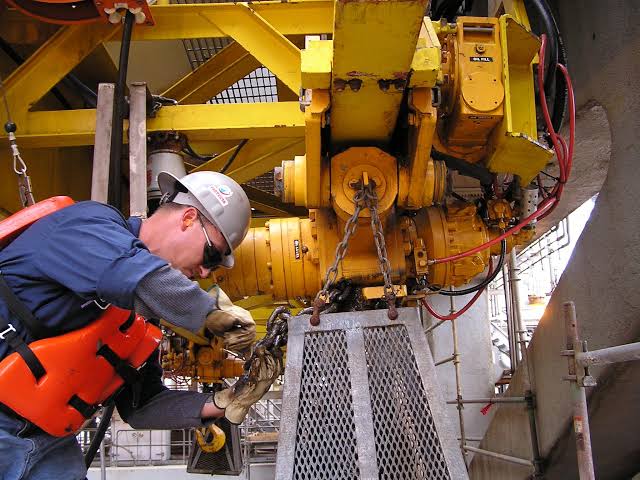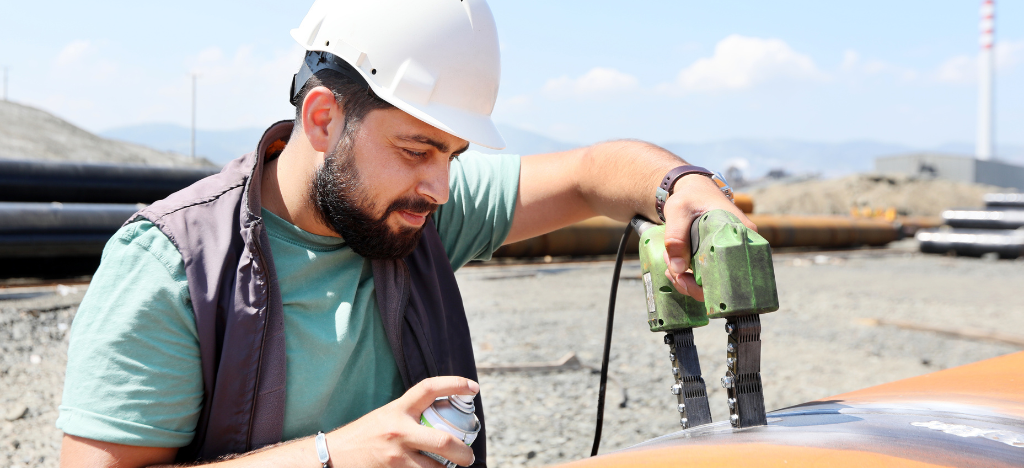Why Lifting Inspection is important in onshore and offshore rigs
Oil and gas onshore and offshore rigs are essential components of the oil and gas industry. They are used to drill for oil and gas, as well as to transport it from one place to another: upstream, midstream, and downstream. Onshore rigs are typically located on land-based sites, while offshore rigs are located in oceans or other bodies of water. The number of companies involved in the oil & gas industry is huge, almost more than 200 companies, with a large number of them using onshore and offshore rigs for their operations. With such a vast number of companies involved, it is important to understand the definition of these rigs, their purpose in the industry, and how they can be used effectively.
It is essential to know that all operations within this industry are conducted safely and efficiently. This is where inspection plays an important role. The inspection helps to ensure that all equipment used in the oil and gas industry meets safety standards and operates properly. It also helps to identify potential issues before they become serious problems that can lead to costly repairs or even accidents. This is why Lifting Inspection is important in onshore and offshore rigs.
What is Lifting Inspection?
We can define the Lifting Inspection as the safety procedure that helps to ensure the safe use of lifting equipment. It involves a visual examination and a test of the lifting equipment to make sure that it meets the required safety standards. It is a vital part of any onshore and offshore rigs.
Lifting Inspection is also important for the safety of workers who are working in these rigs as it helps to identify potential hazards and risks associated with the use of lifting equipment. Additionally, it also helps to ensure that all lifting operations are carried out following the relevant regulations, standards, and guidelines. Doing so reduces the risk of accidents and injuries occurring from using faulty or unsafe equipment.
What are the 3 types of lifting in the oil and gas industry?
The oil and gas industry is a highly specialized field that requires the use of specialized lifting equipment. There are three main types of lifting used in this industry and each type of lifting has its advantages and disadvantages depending on the application.
- Cranes: are typically used to lift heavy objects from the ground or other locations.
- Winches: these are used to pull objects up or down from different heights.
- Hoists: are used to move objects horizontally or vertically over long distances.

What is the difference between lifting appliances and lifting gears?
People may feel confused their first time working in the oil and gas industry between the meaning of lifting appliances and lifting gears, but they are two distinct terms used in the context of material handling. To have a closer look we can say that:
- Lifting appliances refer to any type of machine or device that is used to lift, move, or transport heavy loads. They can range from simple machines such as cranes and hoists to complex pieces of equipment such as forklifts and telehandlers.
- Lifting gears are items of equipment designed specifically for use in the safe and efficient handling of loads. These gears include items such as slings, chains, ropes, spreader beams, clamps, and shackles. These items are designed to provide additional support when it comes to safely lifting heavy objects.
Reasons why Lifting Inspection is important in the oil and gas industry:
Overall, Lifting Inspection is essential to keep workers safe and ensure that operations remain efficient in the oil and gas industry. Any company must have regular Lifting Inspections because it can:
- Minimize the risk: Before using any lifting equipment, you should give it a thorough inspection to find any damage or wear and tear.
- Enhanced safety standards: It’s critical to have improved safety standards since they keep employees safe when they are working on a certain project.
- Increased customer reliability: Customers will have faith in your business and won’t question your honesty.
- Improves quality: Regular equipment checks make sure that any issues that might endanger the workers are quickly found and rectified before they grow into larger issues.
- Workplace safety: A workplace that is risk-free in terms of equipment and surroundings is safe. Regular Lifting Inspections allow you to make the required repairs or replacements before they endanger your workers or lower your company’s production.
How did beXel improve the Lifting Inspection?
At beXel, we are always keen to update our inspection software to manage the data for your equipment in the most efficient way. We have developed a go-to solution for everyone in the lifting inspection sector, according to LEEA and LOLER requirements. The security of your operation on a building site is guaranteed by safety inspection software like beXel. Also, to make sure that the inspection reports and certificates are safe on a secured cloud server.
- Online Equipment Register – Allows you to improve management and equipment tracking on a real time basis.
- Tailor-Made Certificates – Design your certificate structure and layout by using our powerful report builder.



